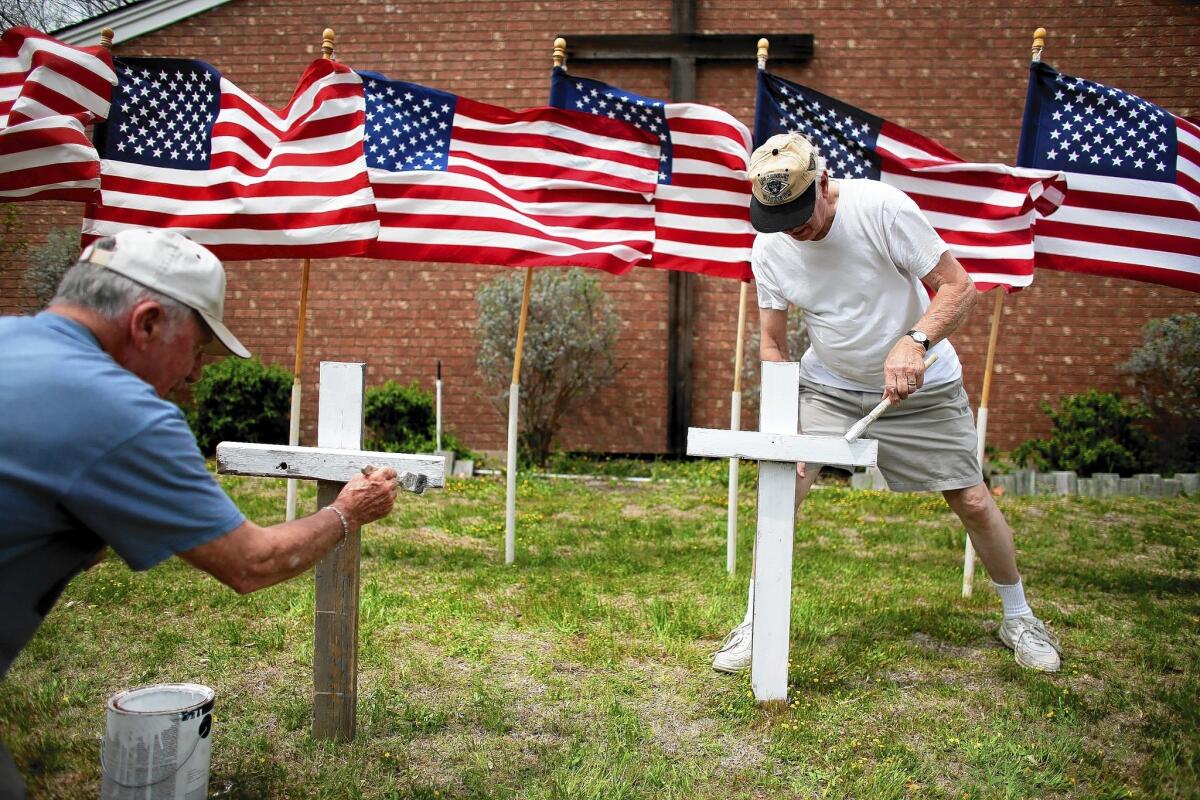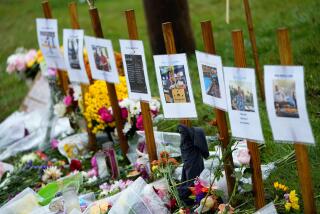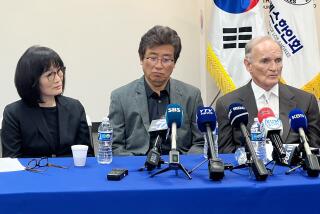Painful questions arise in aftermath of Ft. Hood shooting

KILLEEN, Texas — Beyond the mystifying question of why a person goes on a rampage to kill innocent people, residents of this military town have to deal with an even more vexing one: Why does it keep happening to them?
“There’s a psychological toll on this town,” Terrence Barksdale, 44, said at his tattoo shop just outside the base. “This is the second time. The next person might try something even more asinine.”
With two long wars, his staff had already gotten accustomed to the somber task of regularly inking memorial tattoos for soldiers who died in combat. But this makes no sense.
“We’re not scared, we’re pissed off; all this stuff keeps happening,” said one soldier who was getting a pinup girl on his right biceps. He couldn’t use his name because the Army ordered a ban on speaking to the news media.
When Army Spc. Ivan Lopez opened fire at Ft. Hood on Wednesday — killing three people and wounding 16 others before taking his own life — he was the third person on such a gruesome mission in five years. He even bought his gun at the same shop as his predecessors, Guns Galore.
In 2009, Army Maj. Nidal Malik Hasan shot and killed 13 people and injured more than 30 others at the Ft. Hood processing center, the deadliest military base shooting in U.S. history.
Two years later, an AWOL Army private from Kentucky, Naser Jason Abdo, bought gunpowder, shotgun shells and a handgun at Guns Galore. The store notified authorities, who arrested Abdo at a nearby motel where he was plotting to bomb a restaurant popular with Ft. Hood personnel and shoot anyone trying to escape.
And longtime residents haven’t forgotten that the worst killing rampage took place off-base in 1991. George Hennard, 35, crashed his pickup through the windows of Luby’s cafeteria, and started firing indiscriminately, killing 23 people, including himself.
Kierstin Crachian, 20, said she felt unsafe in Killeen and wanted to move.
“They should have done something the last time this happened. This shouldn’t have been able to happen again,” she said.
She said some soldiers should be allowed to carry guns on the base “but not all of them, because there are some crazy people.”
The Wednesday rampage is driving a debate over whether Congress should repeal a two-decade ban on carrying personal firearms on military bases, a policy designed to protect military personnel against accidental or indiscriminate shootings.
“The government hasn’t learned anything in five years,” said retired Sgt. Howard Ray, who received the Army Commendation Medal for carrying nine people to safety in 2009 during the Hasan shooting.
“They refuse to allow our soldiers to be armed, and so we are seeing this happening again,” he said. “Our soldiers need to be prepared to defend themselves.”
After last year’s shooting at the Washington Navy Yard that left 13 people dead, Rep. Steve Stockman (R-Texas) introduced the Safe Military Bases Act, which would overturn the ban. The measure has languished.
But it was drawing new interest Thursday after Lopez’s attack.
“In the state of Texas, you can get a concealed handgun license and walk into the state Capitol,” Rep. Michael McCaul (R-Texas), chairman of the House Committee on Homeland Security, told Fox News Channel. “And yet, at our military bases, we’re not allowing our trained combat, you know, active-duty officers, to carry weapons on base. I guarantee you, if they had that ability, they could have stopped this guy almost immediately.”
Sen. John Cornyn (R-Texas) said Thursday that the policy would probably be reviewed after Wednesday’s shooting.
“I’m confident that there will be a thorough review to see if there are any gaps in that policy,” Cornyn said.
But his fellow Texas Republican, Rep. John Carter, showed that the issue could be difficult to resolve.
“I am a believer in the right to keep and bear arms,” Carter said on CNN on Thursday. “However, I also believe that if you want to exclude them from your home and tell them that they can leave their pistol at home, you can do it. And quite honestly, Ft. Hood is the Army’s home. I defer to the Army.”
Army policy prohibits carrying privately owned weapons on bases “unless authorized by the senior commander.” Carrying concealed weapons is prohibited “regardless of whether a state or county permit has been obtained,” according to an Army spokesman.
A 1992 Defense Department directive warned about the “consequences of accidental or indiscriminate use of firearms” and said firearms “shall be issued only to qualified personnel when there is a reasonable expectation that life or [Department of Defense] assets will be jeopardized.”
Army Lt. Gen. Mark Milley, the Ft. Hood commander, said after the shooting Wednesday, “I don’t endorse carrying concealed weapons on base.”
When asked by reporters Thursday whether it was feasible to bolster safety on the base by searching those who entered for guns, he said no.
“As we know, Ft. Hood is a big installation; we have 70,000 to 80,000 people that work here on a daily basis,” he said. “It would not be realistic to do a pat-down search on every single soldier and employee.”
Lloyd Graybill, 38, an intelligence officer posted at Ft. Hood since 2001, said he was in shock for several days the last time a shooting occurred.
“They are going to be even more vigilant now, but for the community you sort of become numb, especially the third time.”
Zarembo reported from Killeen, Simon from Washington and Mozingo from Los Angeles. Times staff writer Molly Hennessy-Fiske contributed to this report.
ennessy-Fiske contributed to this report.
More to Read
Sign up for Essential California
The most important California stories and recommendations in your inbox every morning.
You may occasionally receive promotional content from the Los Angeles Times.













